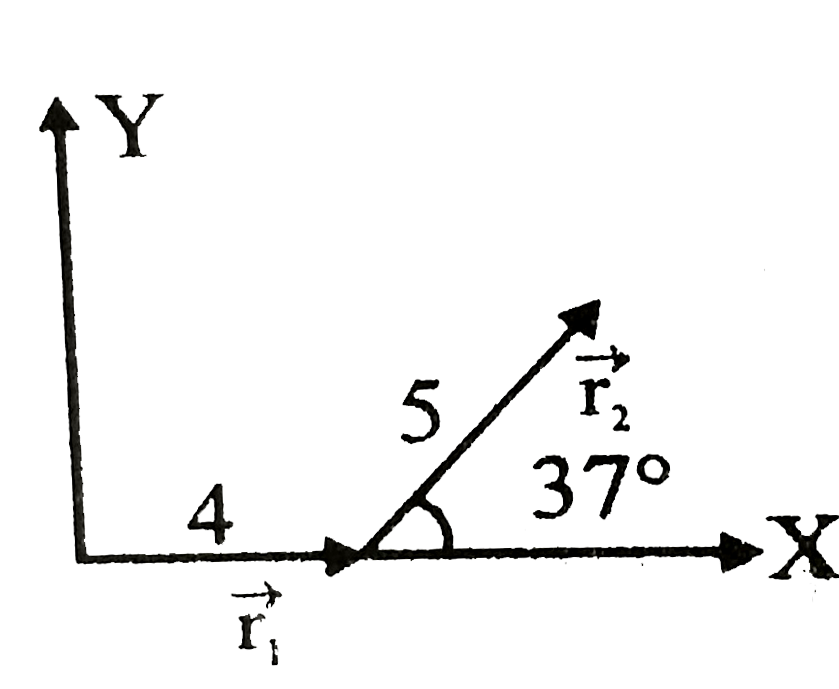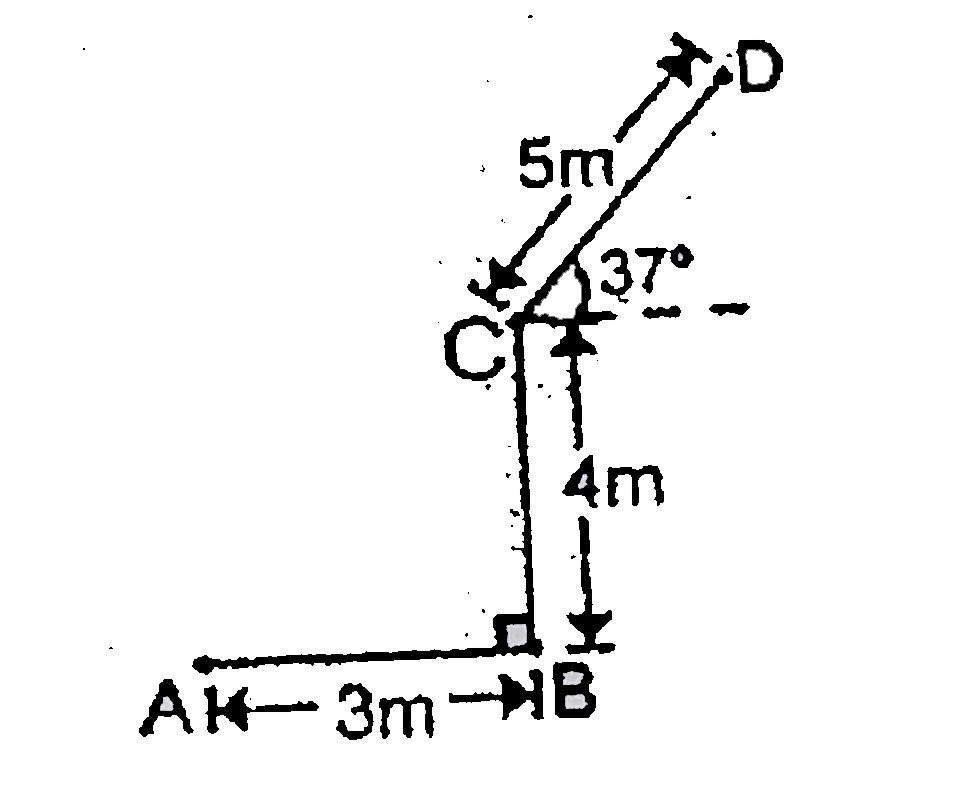An object moves from position (6,8) to (12,10) in the x-y plane. Magnitude and direction of displacement is
√40 and 18.43∘
√40 and 61.56∘
10 and 53∘
√244 and 53∘
The correct Answer is:A
Positions of the particle are
r1=6ˆi+8ˆj and r2=12ˆi+10ˆj
∴Δr=r2−r1=6ˆi+2ˆj⇒|Δr|=√40
θ=tan−1(ΔyΔx)=tan−1(13)=18.43∘
Topper's Solved these Questions
- MOTIONBOOK - DC PANDEYCHAPTER - MOTIONEXERCISE - Check Point 4.2
20 Videos
- MOTIONBOOK - DC PANDEYCHAPTER - MOTIONEXERCISE - Check Point 4.3
10 Videos
- MOTIONBOOK - DC PANDEYCHAPTER - MOTIONEXERCISE - Medical entrances gallery
19 Videos
- MEASUREMENT AND ERRORSBOOK - DC PANDEYCHAPTER - MEASUREMENT AND ERRORSEXERCISE - Subjective
19 Videos
- MOTION IN A PLANEBOOK - DC PANDEYCHAPTER - MOTION IN A PLANEEXERCISE - (C )Medical entrances gallery
32 Videos
Similar Questions
An object moves from position (3,4) to (6,5) in the xy-plane. Find the magnitude and direction of displacement vector of the particle.
View SolutionAn electron is moving along +x direction with a velocity of 6×106ms−1 . It enters a region of uniform electric field of 300 V/cm pointing along + y direction. The magnitude and direction of the magnetic field set up in this region such that the electron keeps moving along the x direction will be :
View Solution
Knowledge Check
A particle moves in xy-plane from position (2m, 4m) to (6m,8m) is 2s. Magnitude and direction of average velocity is
A√2ms−1 and 45∘B2√2ms−1 and 45∘C4√2ms−1 and 30∘D3√2ms−1 and 60∘A particle moves in xy-plane from position (1m,2m) to (3m,4m) in 2s. Find the magnitude and direction of average velocity.
A√2ms−1 , 60∘B√5ms−1 , 45∘C√12ms−1 , 45∘D√2ms−1 , 45∘A force F=(xˆi+2yˆj)N is applied on an object of mass 10 kg, Force displaces the object from position A(1, 0) m to position B(3, 3) m then the work done by the force is (x and y are meter)
A8 JB5 JC13 JD16 J
An object moves 1.00 m in a straight -line displacement →a, changes direction, moves another 1.00 m in straight-line displacement→b, and then ends up 1.0m from the starting point. (a) Through what angle did it turn ? (b) What is the magnitude of →a+→b ?
View SolutionA man moves in the following manner in X-Y plane. Find the magnitude of displacement of man from origin as shown in figure.

View SolutionAn object is moving in the x-y plane with the position as a function of time given by →r=x(t)ˆi+y(t)ˆj. Point O is at x=0,y=0 . The object is definitely moving towards O when
View SolutionA particle moves along a path ABCD as shown in the figure. Then the magnitude of net displacement of the particle from position A to D is:

View SolutionAn object is in uniform circular motion on a plane. Suppose that you measure its displacement from the centre along one direction, say, along the x-axis. Which one among the followmg graphs could represent this displacement (x)?
View Solution
